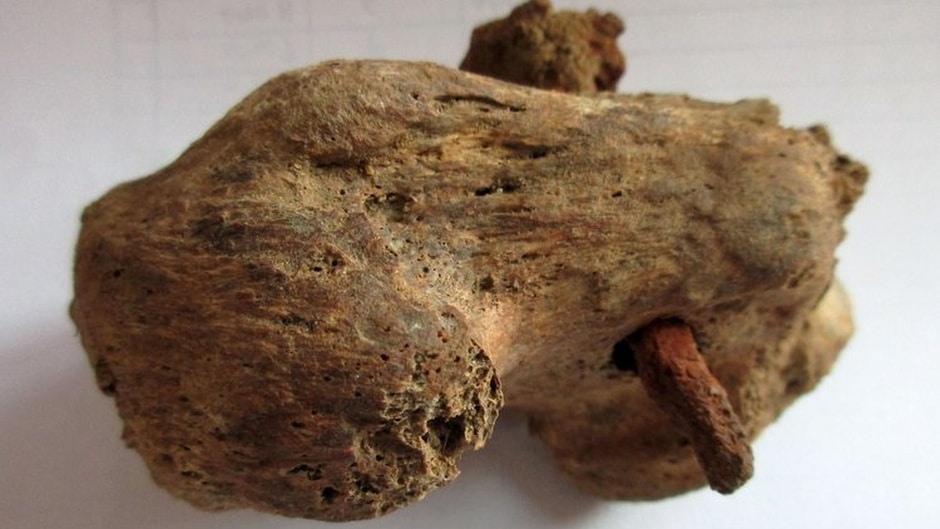CAMBRIDGESHIRE, England (BP) – Additional evidence for the ancient practice of Roman crucifixion dating back to the time period of Jesus has been identified in a skeleton found in Cambridgeshire, England.
The skeleton, originally discovered in 2017, belonged to a male believed to be aged 25 to 35 at the time of this death and contains a heel bone with a nail going through it. It was found in a cemetery around a newly discovered Roman settlement located in Fenstanton, a village in Cambridgeshire.
The nail, which sticks out a few centimeters on each side of the heel bone, was initially noticed shortly after the discovery, but media reports say the association with crucifixion was not determined until recently.
The crucifixion determination was made by scholar Corinne Duhig, an archaeologist at the University of Cambridge. The details and explanation of the conclusion was published in British Archaeology magazine on Dec. 8.
Jim Parker, professor of biblical interpretation at New Orleans Baptist Theological Seminary, described the determination as an “important, legitimate find,” that dates about 100 years after the life of Jesus (somewhere between A.D. 130 and A.D. 360).
Parker also serves as the executive director of the Michael and Sara Moskau Institute of Archaeology at New Orleans, and has been on many archaeological digs throughout the world.
Although he praised the great work of the archaeologists associated with this find, he disagreed slightly with some of the conclusions made regarding it.
Some concluded the discovery is the greatest physical evidence of crucifixion in the world. Parker said although the find provides great additional evidence for Roman crucifixion, other older discoveries provide even stronger evidence.
In addition to this current find, there are two other examples of documented and verified evidence for crucifixion. One example is a heel bone discovered in Gavello, Italy, in 2018 with a hole in it, but Parker says the strongest evidence comes from a 1968 discovery in Egypt.
A heel bone with a nail in the exact same position as the one found in Cambridgeshire, was found in Israel in 1968 and is now on display at the Israel Museum in Jerusalem.
Parker explained the heel bone discovered in 1968 is well preserved, contains an actual inscription of the man who was crucified and has more overall detail than the Cambridgeshire find.
Regardless, though, he said this recent determination in Cambridgeshire helps reinforce the idea that Roman crucifixion likely resembled what is described in the Bible.
“It’s more evidence of crucifixion and it’s consistent with what we’ve already found,” Parker said. “This is just another piece of information we have that shows us that what we have in Scripture is very accurate.”
He elaborated that the concept of killing a human using a tree or wooden cross by piercing their hands and feet is talked about in both the Old and New Testaments.
In Deuteronomy 21:22-23, a reference is made to capital punishment in the form of hanging someone on a tree, and Paul later references this same passage in Galatians 3:13.
Additionally, Parker added he and many theologians interpret Psalm 22 to be King David vividly describing a prophetic vision he is seeing of Jesus on the cross.
He concluded that no archaeology discovery could ever eliminate the need for faith within Christianity, but such discoveries do provide us with more confidence in the accuracy of Scripture.
“Much of what we have in the Bible is theological, which by its very nature is ideas, and you’re never going to go out and excavate ideas in the sense of empirical evidence,” Parker said.
“But when take the historical and biblical account and begin to put that in an archaeological context, direct evidence that is found can support the text and verify it with empirical data.
“It helps Christians as they read the Word and see the Word to be able to do that.”














